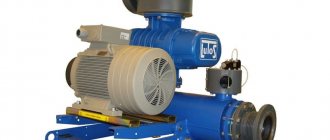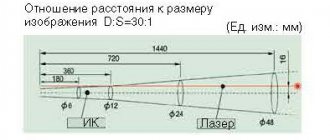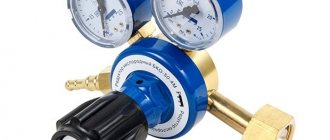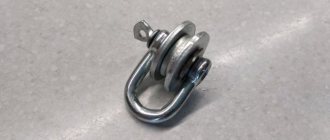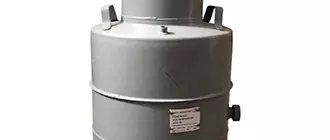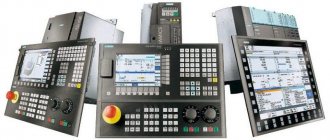Home » Household appliances » Appliance repair » Do-it-yourself iron repair
Today, there is an electric iron in every home. He is an indispensable assistant for almost any housewife.
With its help, any housewife can quickly and easily iron wrinkled clothes. Like any other type of electrical equipment, an iron can also break. Repairing an iron is a fairly simple process and after reading the article you will understand it.
In this article, we described in detail all the reasons that may be associated with an iron failure. We have posted here only the best tips that will help you properly repair your electric iron. You will also learn how to repair an iron yourself.
Operating principle of an electric iron
Today, the circuit of an electric iron is more reminiscent of a kettle circuit. If we look at it in more detail, then we can really understand that it has practically no differences.
In order for your iron to start heating up, voltage must be applied to it. For quick heating, manufacturers usually use powerful heating elements. And the power can range from 1000 to 2200 watts. If this power is passed through it regularly, then its sole may turn red. In this case, it will simply become impossible to use the iron to iron things. For example, to iron nylon items you will need a temperature of 95 to 110 degrees. That is why many manufacturers install a regulator on the iron to regulate the temperature.
You can control the temperature control with a round knob, which is located on the central handle of the iron. If you turn the knob clockwise, the temperature will increase significantly.
Rotation from the handle to the thermostat assembly will be supplied through an adapter in the form of a sleeve. In order to remove the thermostat from the handle of the iron, you just need to pry it off with a screwdriver.
The operation of the Philips iron thermostat has a similar regulator operation. Its design has a built-in special bimetallic plate. It is this that provides temperature regulation. When the temperature begins to rise, then the plate begins to expand. When it expands to a certain size, then the plate will give a signal to the regulator and it will stop heating the iron.
In the thermostat on the iron, this plate will automatically communicate with the bistable switch. They have a fairly simple operating principle. When the iron is heated to a certain temperature, the plates will begin to expand and eventually close. If they close, then heating will automatically stop. When you turn the regulator on or off, the iron will automatically make a click, which has a characteristic sound. Repairing the iron yourself may be necessary if the thermostat breaks. If the convection oven breaks down, then its thermostat may be a possible cause of the breakdown.
To avoid this problem, you need to install a fuse on the iron. If the temperature in your device exceeds 240 degrees, then the fuse will automatically break the circuit. In this case, what position the iron handle will be in does not matter.
Today, thermal fuses can have three types of designs. If the light on the iron shines, but its sole does not heat up, then the problem is a break in the heating element winding. Here is a photo showing the circuit of an electric iron. Thanks to it, you can understand how your device works.
Power is supplied to your device through the power cord. If your iron is not receiving electricity, then it needs to be repaired.
Abstract reasoning
Manufacturers justify turning the iron into a kind of combination lock with safety, design and ergonomic requirements. But, sorry, from the visible fasteners on the irons there were only 1-2 screws at the back, and that remains so. Moreover, the body parts of old irons were made from fragile bakelite and polystyrene, while today’s plastics compete with metals in strength.
In fact, we, alas, live in an age of things that are not eternal. One of the fundamental principles of consumer society is inexorable: a product of mass demand must work flawlessly (manufacturer’s reputation, but what) for no more than 2-2.5 warranty periods, and then quickly and irreversibly become completely unusable. Leading manufacturers of consumer goods employ up to half or more of their design personnel to ensure that, God forbid, the product does not turn out to be too durable.
How does the work of the industry in the trash can affect the environment, and the involvement of truly high-quality specialists in actually harmful activities on the mass consciousness, is another question, but the iron almost does not give in to such attempts: it is too simple, and inside it is too hot and humid. Therefore, damage to the iron at the design stage comes down mainly to making it difficult to disassemble it outside the service center. However, it is still possible to repair an iron at home using improvised means if you know where and what secrets may be hidden in it and how to open them without the risk of completely ruining the iron.
DIY iron repair
Almost anyone can repair an iron themselves. Any iron has a small number of parts. That is why after reading our article you will be able to easily deal with them. Here is a photo that shows the structure of the iron. Sometimes it is much more difficult to disassemble the iron. That is why in this article we looked at disassembling a Fhilips and Braun iron.
Here are the main reasons why irons stop working:
- Broken power cord.
- Thermostat failure.
- Poor contact of terminals in the iron.
- Oxidation of contacts in the thermostat.
- Thermal fuse is faulty.
Steam does not come out - cleaning the soleplate holes
It happens that the iron seems to be working, but for some reason no steam comes out. Steam cannot find a way out, usually because scale (limescale) has accumulated on the holes. To clean the sole, take a baking sheet and pour a solution of vinegar (1 tbsp per 1 liter of water) or citric acid (1 tbsp per 1 tbsp of water) into it, and place the iron. Place it so that the spout is below the back edge. Pour water to a height of 1-1.5 cm. Now you need to adjust the steam supply to maximum and put the baking sheet on fire. Bring to a boil and let cool. We repeat the process 2-3 times.
To avoid scale build-up, use purified water - this will extend the life of your iron.
Checking the serviceability of the power cord on the iron
When ironing clothes, the power cord constantly bends. The greatest bend will always occur at the junction of the cord with the structure of the iron. This is where the power cord will fray. This malfunction begins to manifest itself much earlier before the breakdown. If it heats up normally, but the indicator lamp begins to blink, then this is a manifestation of a future breakdown.
If the insulation of the wires located inside begins to fray, then a short circuit of the device may occur. If this happens, then you need to unplug the iron from the socket and start repairing it yourself. If the iron stops heating, then you need to check the voltage in the outlet. If the socket is working properly, then you need to move the wire at the junction with the iron. If the indicator lights up, then the cause will be a broken wire in the power cord.
Exploitation
Using any model is quite simple. All that is required is to set the ironing modes correctly. In most modern devices, the switch sensor is located on the top side. There are models where the regulator is located directly on the handle.
You just have to plug in the iron and wait a few minutes. As soon as the sole reaches the set temperature, a signal will sound or the lamp on the body will go out. After this you can start ironing.
Do not leave water in the steam generator or tank after all operations have been completed. It often contains trace elements, minerals and salts that can damage the device or its components. It is better to pre-filter water for ironing. This will help avoid blockages and breakdowns.
Checking the serviceability of the electrical cord using a multimeter
If you have a multimeter in your house, then you can check the performance of the iron with its help. You need to check the cord without connecting it to the electrical network. If the iron is working properly, then its resistance will be about 30 ohms. If you move the cord while taking a measurement and its resistance fluctuates, then this may indicate a faulty cord.
If the iron cord is frayed in the place where the power plug is located, then you just need to replace the device plug. We have already written to you how to do this. If the power cord is frayed where it connects to the iron, then the device will have to be disassembled. After you remove the cover you will see the power cord contacts.
To date, there is no specific marking of wires for irons. That is why we will now look at the markings of the power cord for irons:
- The yellow-green conductor is grounding.
- Brown is a phase.
- The blue wire is zero.
Repairing an electric iron involves replacing the power cord. When you repair your iron, be sure to use caution. When you repair your range hood, you also need to check the functionality of the electrical cord.
Checking the serviceability of the iron's power cord using a table lamp
You can check the power cord on your iron in various ways. Everything will depend only on what you have available. If you don’t have any appliances in your house, then you can check the iron using a table lamp. To do this, you need to release the latch as shown in the photo.
Now you need to clean the contacts until they shine. If your terminals will fit without effort, then you need to tighten them with pliers. It is quite possible that this was precisely the problem. If everything is in order, then you need to connect the plug of the table lamp to the blue and brown wires. The switch, which is located in the table lamp, must be in the on position. If the table lamp shines steadily, then the device is fully operational.
Checking the serviceability of the power cord on the iron using the phase indicator
Iron repair cannot be carried out without an indicator screwdriver. It will help determine the performance of your device. In order to check the terminal with an indicator screwdriver, you must first provide access to it. If, when you touch one of the wires, the indicator lights up, but does not light up on the other, it means that the wire that the indicator lights up when you touch it is working properly. If it lights up in both cases, it means the wire that is connected to the phase in the socket is working and the entire circuit of the iron, including the thermostat, fuse and heating element, too.
Checking a tubular electric heater on an iron
Usually the heating elements that are in the iron rarely fail. In order to check its functionality, you need to remove the back cover from the device. Typically, on an iron, the heating element terminal is connected to the outermost terminal of the device. If the indicator on the device lights up, but heating does not occur, then the reason may be due to a broken spiral.
Sometimes you can find devices in which the thermostat is connected to the break of one terminal of the heating element. In this case, the thermal fuse may be faulty, but this conclusion may be incorrect.
How to get there?
All this is good, but our iron has not yet been disassembled. In general, disassembling the iron is done as follows. way:
- Remove the temperature setting knob.
- Remove the back cover (possibly together with the top).
- Remove the contact block.
- Remove the top cover.
- Remove the body.
- Remove the thermostat casing (if equipped).
After this, all components of the iron become available for inspection and repair. Of course, each stage has its own subtleties and features. We will consider some further, not as examples of models from individual manufacturers, but for now let’s focus on the general “problems”.
Back cover
This is the only part secured with a screw(s) visible from the outside. There may be 2 of the latter below. In this case, 2 options are possible: the back cover is integral with the top and separately. In the first case, the handle of the iron will be straight, and both covers are immediately pulled back, pushing the upper one with your fingers: it sits with horizontal spikes in the longitudinal grooves.
If the covers are separate and the back cover is on one or 2 screws, then again 2 cases are possible: the back cover is flush with the body and on the cover. In the first case, the lid is pulled towards you by the bottom - at the top it is secured with spikes in the grooves, which will turn out and the lid will come out. The second case concerns almost exclusively covers with one screw in the middle. If the lid does not come out after unscrewing the screw and does not pull at the bottom, then it has double tenons in the grooves, at the top and at the bottom. Then you need to push the lid up so that the lower tenons are released, and then pull the bottom so that the upper ones turn out of the grooves.
Block
After removing the back cover, the contact block will be visible, this is already the source of malfunctions. In some irons (not necessarily cheap ones) the contact block is a regular screw one (item 1 in the figure), it can melt, then you need to change it to propylene. Polyethylene and PVC will not withstand the iron!
Iron contact blocks
Pads with slip-on terminals (item 2) are the most reliable, but for further disassembly of the iron, the terminals must be removed. To do this, their protrusions-clamps are pressed through the holes in the contacts with an awl or a thin screwdriver.
To remove the solid cut-in block (item 3), you need to unscrew 2 screws of the power cord clamp and 2 screws holding the block itself. If the network wires do not ring accordingly. sockets of the block (green arrows on item 4), the block needs to be changed or plug-in terminals must be installed on the wires, because The wires in the terminal block cannot be re-terminated.
Top cover
The curved top cover is held in place by tight latches without locking. At home, it is removed with a pair of squeezers (see above), starting, as a rule, from the rear end. It doesn’t work - you need to try from the front.
Positional defense
Under the top cover of most irons there is a positional protection module. The most vulnerable part of it is the position sensor. As a rule, this is a plastic box (red arrows in the figure) with only a couple of terminals. The position sensor is either closed with a tight-fitting lid, or filled with a compound on top that can be picked out.
Iron position protection modules
A malfunction of the position sensor is typical: the iron does not turn on, and if you shake it, it may turn on for a while and turn off spontaneously again. When disassembling the sensor, it is discovered that inside there are a pair of contacts and a metal roller, covered with something viscous and dirty. The sensor was initially filled with clean and clear silicone grease, but the current in the high power relay coil is sufficient to cause the contacts to spark. The filling becomes contaminated with carbon deposits, the roller does not close the contacts well and does not move as it should.
They remove unusable silicone with table vinegar, but you cannot leave the roller dry: when ironing, the relay will “pop” all the time, the iron will heat up unpredictably, and the sensor will soon completely fail. Instead of silicone, the sensor must be filled with any liquid machine oil; By the way, it is more resistant to contamination and dampens sparks better than silicone. The sensor is washed with alcohol, a needle from a medical syringe is put on the spout of the oil can and the sensor is filled carefully so that the oil does not flow onto the walls. Once filled, the lid is glued back with “Titanium” or other superglue; if the walls are oily, the glue will not hold.
Note: in irons Brown and Neck. In other cases, the signal from the position sensor is processed by a microcircuit (upper position in the figure). In this case, the position sensor roller can be left dry.
Another possible malfunction is burnt contacts or a burnt-out relay winding, then the iron will not turn on at all. To check, the module must be removed from the iron and its operating voltage of direct or alternating current, which is indicated on the relay body (green arrows), must be applied to the relay winding. A click should be heard and the tester should show contact closure. No - the relay needs to be changed.
Note: if you are not sure that the winding voltage is indicated on the relay, you need to measure its resistance. Suddenly, the winding current at the specified voltage turns out to be more than 80-100 mA; it cannot be supplied to the winding. You need to check the relay from a regulated power source. As a rule, the operating voltage of the winding does not exceed 24 V.
It is quite possible to do without positional defense. To partially turn it off (for the heating element indicator to work), you need to unsolder the white wire and connect it to the brown one, or unsolder the red one and connect it to the blue one. In this case, the relay may click and rattle, so it is better to unsolder it too.
Frame
Iron body fastenings
After removing the back cover and contact block, the tenons in the grooves holding the housing will appear (lower position in the figure on the right) or screws, but take your time: the housing is held in place by another screw or two in the area of the iron nose. How the Chinese hide them has already been said, but in other irons they are on the spout under the filler cap. It remains in place after removing the top cover. To remove the filler cap, you need to lift the filler flap and remove the cap with it using squeezers, then the nose screws (upper position) will be visible.
The body of the iron is removed along with the pumps, and their malfunctions become visible, from which either there is no steam, or water flows into the body, the iron crackles, sparks, beats with current: cracked tubes, pipes and valves (nipples) clogged with salt deposits. There is no point in gluing the tubes; any glue in the iron is like a poultice for the dead. First, you need to clean the hydraulic system from scale. For plastic, this is done mechanically, with a cotton swab soaked in alcohol. The nipples are washed with a solution of citric acid (1 tsp per glass of water). A solution of acetic acid (vinegar) emits chemically aggressive fumes that corrode metal. Then the fragments of the cracked tubes are collected together, pieces of heat-shrinkable tube are put on them (HERE, heat-shrink) and heated with a household hairdryer.
